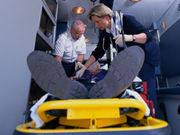Investigators identify strategies for ensuring the drug’s availability
THURSDAY, Dec. 8, 2016 (HealthDay News) — Escalating prices of the drug naloxone may threaten efforts to reduce opioid-related deaths across America, according to a perspective piece published in the Dec. 8 issue of the New England Journal of Medicine.
The research team from Yale University and the Mayo Clinic called attention to the increasing prices, noting that (1) Hospira (a Pfizer company) charges $142 for a 10-pack of naloxone — up 129 percent since 2012; (2) Amphastar’s 1 mg version of naloxone is used off-label as a nasal spray. It’s priced around $40 — a 95 percent increase since September 2014; and (3) newer, easier-to-use formulations are even more expensive — a two-dose package of Evzio (naloxone) costs $4,500, an increase of more than 500 percent over two years.
Naloxone is part of a wave of precipitous price hikes affecting old and new medicines. These drugs include Mylan’s EpiPen injectors for life-threatening allergic reactions; Turing Pharmaceuticals’ Sovaldi for hepatitis C; and insulin for diabetes made by Eli Lilly and Company, Novo Nordisk, and Sanofi U.S.
Several U.S. agencies have recommended boosting access to naloxone to combat prescription opioid-related deaths, the study authors noted. The authors argued that the government should do more to ensure the drug is affordable. Possible strategies include: encouraging generic competition; buying in bulk; and importing generics from international manufacturers. The government could also invoke a federal law that allows it to contract with a manufacturer to produce less-costly versions, the study authors suggested. It’s also possible that the U.S. Food and Drug Administration could switch naloxone to over-the-counter status, the researchers said.
Full Text
Copyright © 2016 HealthDay. All rights reserved.








